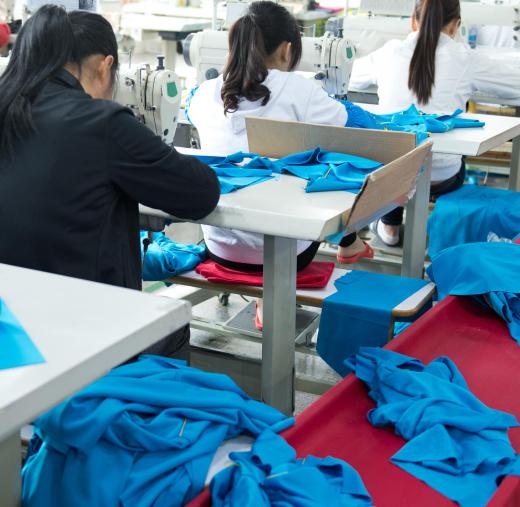Most all forms of garment quality control involve sight and stress inspection. Quality inspectors look over individual items in an effort to spot defects in fabric and workmanship. In addition, these inspectors may pull at seams to determine if the strength of the seam is adequate to accept stress. Seams that must be able to accept the stress of body movement include seat seams, inseams and seams at sleeve openings. These are the areas where the body most often moves, so these seams must be especially strong.
Most clothing manufacturers do not require that their garment quality control inspectors have higher education. They may, however, require these inspectors to undergo training prior to beginning their jobs. Quality inspectors in clothing manufacturing often do much more than simply inspect the garments. In many cases, they are required to clip hanging strings and fold and sort the garments so they are ready for packaging and shipment.

Garment construction usually involves the use of several different types of sewing machines, and garment inspectors carefully inspect machine stitching. Some of those machines are over lock machines, straight stitch machines, and bar tack machines. Over lock machines, also referred to as sergers, usually use more than one needle to produce a seam that does not have a raw edge. These machines are used to produce stronger seams that will not ravel after laundering and wear. Bar tack machines are usually used to provide reinforcement to areas of extreme stress and in the attachment of belt loops.
In addition to stitch inspection, garment quality control also involves setting aside soiled items and searching for human error. They generally check garments to make sure they have been properly labeled by size and color. In addition, they inspect seams to be sure machine operators properly aligned each piece before sewing. When inspecting shorts or pants, they usually check to be sure each leg is of the same length.
People who work in garment quality control usually have to spend their works hours in standing positions, though in some cases, they may be sitting at tables. People who have circulation disorders or problems with their legs may not be able to spend that much time on their feet. Standing in one position for an extended amount of time is often much harder on some muscle groups and does not provide the circulatory benefits of walking.
